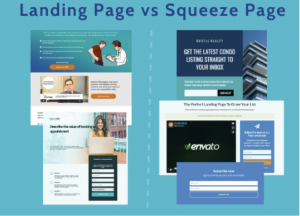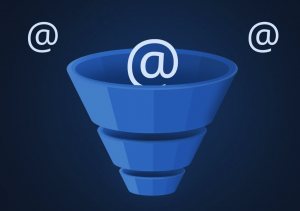Even IF you are an occasional reader of my blogs, you already know I’m a HUGE ’80’s music fanatic.  So this month’s ‘post’ is about Squeeze pages and Landing Pages.
So this month’s ‘post’ is about Squeeze pages and Landing Pages.
The English Pop Group: SQUEEZE was a personal favorite of mine with such notable hits: Black Coffee in Bed, Tempted and Pulling Mussels. This has nothing to do with the article, but I like making analogies between my post and a rock group.
By now, you must be asking yourself……..(Jeff)……..what is a Squeeze Page? Let’s begin.
A few months back, I was having lunch with a former colleague and good friend of mine and he mentioned the terminology and (to be totally transparent) I had heard the phrase, but really wasn’t familiar with it. So, as I normally do, I dug-in and figured it out. Low & behold, I had been doing this for a while with my clients but wasn’t familiar with the actual terminology.
Landing pages have served as a fundamental tool for marketers since the dawn of the modern internet. But landing pages aren’t all created equal. In some circumstances, a squeeze page may be the way to go. But what is a squeeze page?
The Purpose of Both Landing Page and Squeeze Page
 A landing page is a standalone page that aims to achieve a single conversion goal — which could be anything from gaining free trial signups for a new product, to registering attendance for a webinar, to leading buyers to catalog or product pages. As such, the information requested from the visitor, if any, varies. For example, you might request their email, their full address, their credit card details, or for nothing but a click-through to the next page.
A landing page is a standalone page that aims to achieve a single conversion goal — which could be anything from gaining free trial signups for a new product, to registering attendance for a webinar, to leading buyers to catalog or product pages. As such, the information requested from the visitor, if any, varies. For example, you might request their email, their full address, their credit card details, or for nothing but a click-through to the next page.
A squeeze page, on the other hand, has one constant goal: to collect the user’s name and email address. Squeeze pages can also be used to offer a free ebook, white paper or subscription to a podcast in exchange for the user’s email address but the requested information always remains the same.
Squeeze pages are very similar to landing pages, but more [product] focused. They typically feature just one product and have a very clear call to action in order to get the email. Squeeze pages should be more streamlined, but with less content on the page
Squeeze Pages are a Subset of Landing Pages
Both landing pages and squeeze pages have similar designs principles where they both have a header, a call-to-action, appealing visuals and a form.  The difference between a landing page and a squeeze page is very difficult to distinguish since they serve the same purpose in capturing user information. People think that a landing page is any page with a call-to-action on it, but in my opinion, a landing page must have a form and exist solely for the purpose of capturing a visitor’s information through that form. This is also the mission of a squeeze page, to have someone fill out a form their email address. So really, a squeeze page is a specific type of landing page. Both pages focus on getting a user to fill out a form. Therefore, the same design principles apply to both
The difference between a landing page and a squeeze page is very difficult to distinguish since they serve the same purpose in capturing user information. People think that a landing page is any page with a call-to-action on it, but in my opinion, a landing page must have a form and exist solely for the purpose of capturing a visitor’s information through that form. This is also the mission of a squeeze page, to have someone fill out a form their email address. So really, a squeeze page is a specific type of landing page. Both pages focus on getting a user to fill out a form. Therefore, the same design principles apply to both
To summarize, all squeeze pages are landing pages, but not all landing pages are squeeze pages. It should also be noted that, because of its more focused nature, a squeeze page doesn’t always manifest as a standalone page. They can be incorporated into blog posts and even pop-ups to gain email addresses from readers and website visitors from all over the website.

 317-289-4965
317-289-4965